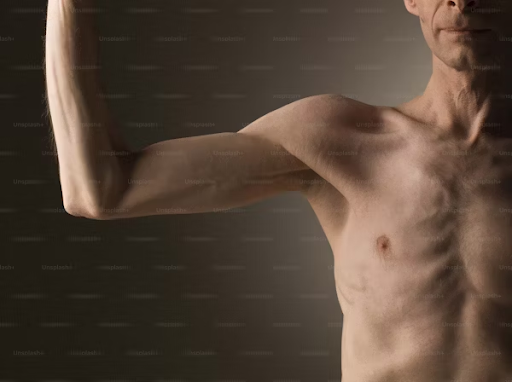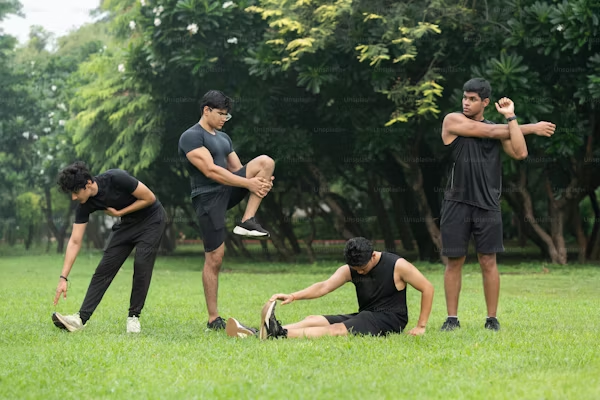
Introduction
Sarcopenia is a condition characterized by the progressive loss of muscle mass, strength, and function due to aging. Individuals with sarcopenia often experience mobility issues and are more prone to injuries such as fractures and falls. Similar to osteoporosis, sarcopenia is a serious medical condition that significantly impacts the elderly. However, preventive measures such as strength training with a weighted vest, maintaining a balanced diet, and proper nutrition can help slow down its progression.
This article explores the causes, symptoms, and risk factors of sarcopenia and how weighted vests can serve as an effective tool in its prevention and management.
Understanding Sarcopenia
What is Sarcopenia?
The term “sarcopenia” originates from the Greek words sarx (flesh) and penia (loss), meaning “poverty of flesh.” It primarily affects older adults, causing a gradual decline in muscle mass and strength, which typically begins around the age of 30 and becomes more noticeable after 60.
With an aging global population, sarcopenia has become a major health concern. The World Health Organization officially classifies it as a disease, and it has its own code (ICD-10) under the International Classification of Diseases.

Symptoms of Sarcopenia
Key symptoms of sarcopenia include:
- Loss of muscle mass: Noticeable thinning of limbs or overall body size reduction.
- Decreased strength: Difficulty performing everyday tasks such as lifting, climbing stairs, or opening jars.
- Impaired balance and coordination: Increased risk of falls due to muscle weakness.
- Reduced endurance: Feeling fatigued more quickly during physical activities.
- Slower walking pace: A common sign of declining muscle function in older adults.
Causes and Risk Factors
Several factors contribute to sarcopenia, including:
- Aging: Natural decline in muscle protein synthesis.
- Lack of exercise: Physical inactivity accelerates muscle atrophy.
- Malnutrition: Inadequate protein and essential nutrients lead to muscle depletion.
- Hormonal changes: Low levels of testosterone, growth hormone, and insulin-like growth factor-1 (IGF-1) contribute to muscle loss.
- Chronic diseases: Conditions such as diabetes, heart disease, and kidney disease exacerbate muscle wasting.
- Inflammation: Chronic inflammation (often linked to aging) further contributes to muscle decline.
The Role of Exercise in Preventing Sarcopenia
Exercise is a crucial intervention for sarcopenia.Lifting weights doing push-ups and engaging in activities that mimic everyday movements not only add muscle but also boost strength and the ability to carry out daily tasks. Adding a weighted vest is among the top methods to boost the effectiveness of resistance training.
How Weighted Vests Combat Sarcopenia

A weighted vest is designed to add resistance to various exercises, increasing muscle engagement and improving overall fitness. Here’s how weighted vests help in preventing and managing sarcopenia:
Wearing a weighted vest during lower-body resistance exercises enhances muscle activation, promoting hypertrophy and helping older adults retain or regain muscle mass.
- Improved Bone Density
Sarcopenia often coexists with osteoporosis. Training with a weighted vest stimulates bone remodeling, helping restore lost bone density and reducing the risk of fractures.
Weighted vests improve real-life strength, making daily tasks such as walking, climbing stairs, and carrying groceries easier. This enhances independence and quality of life.
Sarcopenia can lead to a loss of balance and proprioception, increasing fall risk. Weighted vest training strengthens core and stabilizer muscles, improving balance, posture, and coordination.
Walking or jogging with a weighted vest enhances cardiovascular endurance, promoting mobility and reducing frailty in aging individuals.
- Enhanced Metabolism and Fat Loss
Metabolism slows with age, often leading to weight gain. Weighted vests increase calorie expenditure, promoting fat loss while preserving muscle mass.
- Slowed Muscle Loss
Even if some muscle loss has already occurred, weighted vests help slow further decline. Progressive overload—gradually increasing resistance—can mitigate sarcopenia’s effects.
Best Exercises with a Weighted Vest

Incorporating a weighted vest into a workout routine can significantly improve strength and endurance. Here are some effective exercises:
- Weighted Vest Walking
- Easily integrates into daily routines.
- Improves endurance, bone density, and lower body strength.
- Distance can be increased gradually as endurance improves.
- Squats
- Targets glutes, core, quadriceps, and hamstrings.
- Strengthens functional movements like sitting and standing.
- Variations: sumo, wide, or narrow stance squats.
- Lunges
- Enhances coordination, balance, and lower-body strength.
- Works the thighs and glutes.
- Variations: forward, reverse, and side lunges.
- Step-Ups
- Simulates stair climbing.
- Engages lower body muscles and improves balance.
- Can be performed using a stable bench or step platform.
- Strengthens the chest, arms, and shoulders.
- Weighted vests increase resistance and muscle engagement.
- Planks
- Strengthens the core, improving overall stability.
- Variations: side planks or plank-to-push-up movements.
- Calf Raises
- Strengthens calf muscles and ankle stability.
- Helps prevent falls and lower-body injuries.
How to Safely Use a Weighted Vest

To maximize benefits and prevent injuries, follow these safety tips:
- Start light: Begin with 5-10% of body weight and gradually increase.
- Distribute weight properly: Ensure the vest fits snugly to prevent shifting.
- Listen to your body: Reduce weight or take breaks if discomfort arises.
- Prioritize recovery: Adequate protein intake supports muscle repair.
- Maintain proper form: Focus on correct exercise techniques to avoid injury.
- Consult an expert: Speak with a doctor or fitness professional before starting, especially if you have pre-existing conditions.
Final Thoughts
Sarcopenia is a serious age-related condition, but it is not inevitable. Resistance training—particularly with a weighted vest—can slow muscle loss, enhance bone density, and improve functional strength.
Incorporating weighted vests into daily exercise routines improves mobility, prevents falls, and enhances cardiovascular and metabolic health. With proper nutrition and an active lifestyle, individuals can maintain their strength and independence well into old age.
References
- Cruz-Jentoft, A. J., et al. (2019). “Sarcopenia: revised European consensus on definition and diagnosis.” Age and Ageing, 48(1), 16-31. https://doi.org/10.1093/ageing/afy169
- Tieland, M., et al. (2018). “Exercise and protein intake for optimal muscle function with aging: Recommendations and practical tips.” Clinical Nutrition, 37(3), 1121-1128. https://doi.org/10.1016/j.clnu.2017.06.019
- Liu, C. J., & Latham, N. K. (2009). “Progressive resistance strength training for improving physical function in older adults.” Cochrane Database of Systematic Reviews, 2009(3), CD002759. https://doi.org/10.1002/14651858.CD002759.pub2
- Beaudart, C., et al. (2017). “Health outcomes of sarcopenia: A systematic review and meta-analysis.” PLOS ONE, 12(1), e0169548. https://doi.org/10.1371/journal.pone.0169548
- Latham, N. K., et al. (2004). “A randomized, controlled trial of progressive resistance strength training in older adults.” The Journals of Gerontology: Series A, 59(1), M26-M31. https://doi.org/10.1093/gerona/59.1.M26
- Kemmler, W., et al. (2020). “Effects of whole-body electromyostimulation versus high‐intensity resistance exercise on body composition and muscle strength in postmenopausal women: A randomized controlled trial.” Osteoporosis International, 31(9), 1807-1818. https://doi.org/10.1007/s00198-020-05377-x
- Mcleod, J. C., et al. (2019). “The role of resistance training in the prevention and treatment of sarcopenia.” Ageing Research Reviews, 47, 100781. https://doi.org/10.1016/j.arr.2018.07.002
- Wilkinson, D. J., et al. (2018). “Effects of exercise on muscle protein metabolism in older adults: A systematic review and meta-analysis.” American Journal of Clinical Nutrition, 108(3), 533-545. https://doi.org/10.1093/ajcn/nqy088



